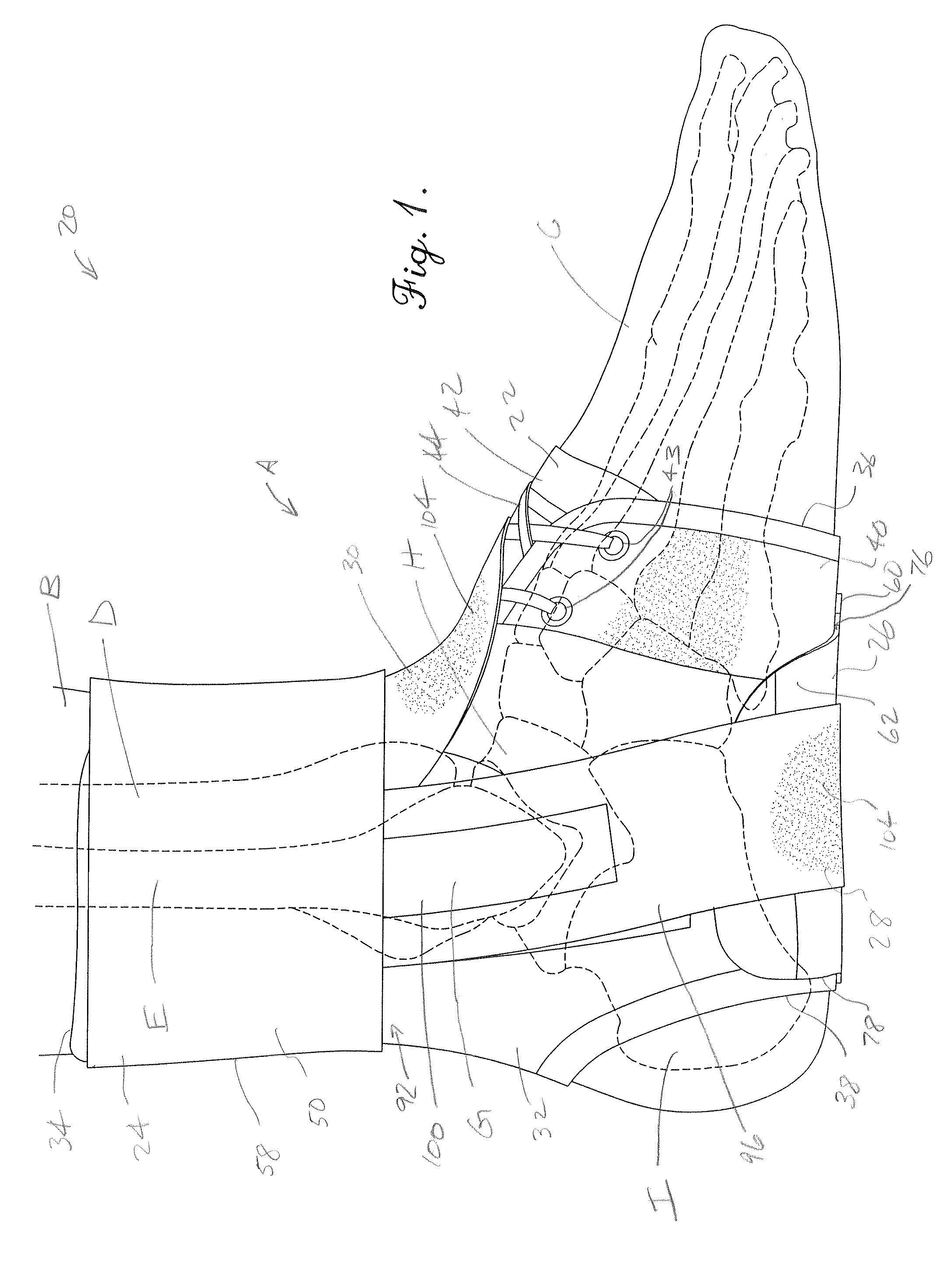Ankle stabilizer
a stabilizer and ankle technology, applied in the field of orthopedic medical devices, can solve the problems of slow rehabilitation and promote muscle atrophy, lack of performance, and bulky braces,
- Summary
- Abstract
- Description
- Claims
- Application Information
AI Technical Summary
Benefits of technology
Problems solved by technology
Method used
Image
Examples
Embodiment Construction
[0035]Turning initially to FIGS. 1 and 2, a synovial ankle joint A of the human body is generally formed between the leg B and the foot C. The ankle joint A includes a number of bones that generally connect the foot C to the tibia D and fibula E of the leg B. For instance, the tibia D and fibula E present corresponding medial and lateral malleoli F,G that are attached to the talus H and calcaneous I. The ankle joint A is flexible in a number of directions including inversion (where the foot is turned inwardly relative to the leg and which can result in undue stretching of lateral ligaments), eversion (where the foot is turned outwardly relative to the leg and which can result in undue stretching of medial ligaments), dorsiflexion (where the anterior end of the foot is turned upwardly relative to the heel) and plantar flexion (where the anterior end of the foot is turned downwardly relative to the heel). Although several foot joints adjacent the heel permit these movements, the words...
PUM
 Login to View More
Login to View More Abstract
Description
Claims
Application Information
 Login to View More
Login to View More - R&D
- Intellectual Property
- Life Sciences
- Materials
- Tech Scout
- Unparalleled Data Quality
- Higher Quality Content
- 60% Fewer Hallucinations
Browse by: Latest US Patents, China's latest patents, Technical Efficacy Thesaurus, Application Domain, Technology Topic, Popular Technical Reports.
© 2025 PatSnap. All rights reserved.Legal|Privacy policy|Modern Slavery Act Transparency Statement|Sitemap|About US| Contact US: help@patsnap.com



